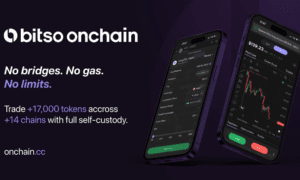Introduction:
Most businesses don’t have a call problem. They have a visibility problem.
Calls are happening. Leads are asking the right questions.
But the gaps between marketing, sales, and operations are where growth leaks.
When growth slows or margins shrink, most teams look outward, more ads, more tools, more hires. But often, the biggest wins come from within: better visibility, smarter routing, clearer attribution.
That’s where platforms like Call Loom make a quiet but powerful difference.
In this guide, we break down real-world Call Loom use cases that led to measurable impact, from reducing wasted ad spend to uncovering hidden buyer intent. These aren’t surface-level wins. They’re strategic shifts built on data teams already had, but weren’t using.
If you’ve ever asked:
- “What’s really working in my funnel?”
- “Which channels are worth scaling?”
- “Where are we bleeding leads?”
Then this breakdown is built for you.
Use Case 1: From “No Idea Where Leads Come From” To Full-Funnel Attribution
The problem:
A fast-scaling services brand was generating a high volume of calls but had no way of knowing which campaigns were actually driving results.
The fix:
By implementing AI Call Tracking with source-level tagging, they began mapping every inbound call to its true origin.
Call Loom assigned unique tracking numbers to each channel letting them see exactly what was working and what wasn’t.
Why it mattered:
Without this kind of visibility, they were making budget decisions in the dark.
With Call Loom, they could shift spend to what actually converted and cut the rest.
What changed:
They reallocated 25% of their ad budget from underperforming campaigns, doubled down on one high-performing channel, and saw a 30% lift in qualified call volume in 60 days.
Use Case 2: From Missed Calls and Manual Logs To Automated Routing and Transcripts
The problem:
A mid-sized B2B sales team struggled with scattered inbound calls, missed voicemails, no central log, and zero context before follow-ups.
Leads were slipping through the cracks, and agents were stuck in repetitive admin work.
The fix:
Using Call Loom Features, they activated real-time call routing with contextual tagging. Every call was automatically routed to the right rep based on business hours, location, or campaign.
On top of that, Call Loom’s transcription and analytics eliminated the need for manual note-taking. Now the team had instant visibility into call quality, lead intent, and follow-up needs all searchable and timestamped.
Why it mattered:
No more chasing voicemails. No more “who took this call?” confusion.
The team reclaimed time and management finally had clean data to coach from.
What changed:
They cut call handling time, reduced lead response delays, and were able to reassign two full-time admin roles.
Use Case 4: From Missed Patterns To Real-Time Sales Coaching
The problem:
A mid-sized B2B company had a growing sales team handling inbound leads but no clear way to measure what was actually said on those calls.
Managers relied on CRM notes (often incomplete), rep summaries (often biased), and gut feel.
This made it hard to coach effectively, standardize winning scripts, or catch red flags early.
The fix:
They activated Call Loom’s Call Transcription and tagging features.
Every call was automatically transcribed and categorized by keywords, outcomes, and product lines.
Supervisors could review calls by intent, objection type, or outcome without needing to manually listen to every minute.
Why it mattered:
Patterns emerged. They noticed top reps used a specific phrasing when closing deals and weaker reps skipped key qualifying questions.
This insight turned into training modules, shared templates, and weekly QA reviews.
What changed:
The sales floor shifted from inconsistent performance to repeatable, trackable excellence.
What Makes Call Loom Different Then Other Call Tracking Platforms?
Most call tracking tools stop at basic attribution. They’ll tell you which campaign drove the call but not what happened after the call connected. That’s where teams hit a wall.
Call Loom goes further.
Its intelligent call engine isn’t just a passive listener, it’s a real-time source of insight. From AI Call Tracking that identifies buyer intent, to searchable transcriptions that surface trends across conversations, the platform helps teams move from reaction to strategy.
This matters because most businesses don’t just need more data, they need better questions answered. Like:
- What types of calls lead to conversions and which don’t?
- Are reps sticking to scripts that actually perform?
- Where in the funnel are we losing high-value leads?
With Call Loom Features designed for marketing, sales, and support teams alike, it becomes easier to see patterns across every touchpoint not just where the call started.
It’s not about tracking for tracking’s sake.
It’s about connecting the dots between conversations, conversions, and cost.

































